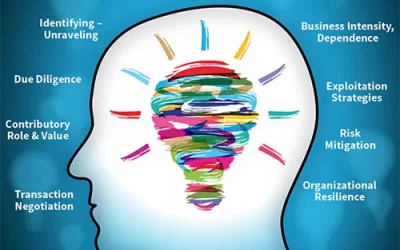Michael D. Moberly January 16, 2012
First, it’s important to recognize that a company’s competitive advantages (business differentiators) are, in most instances, intangible assets.
Second, in today’s globally predatorial, aggressive, and winner-take-all business (transaction) environment, companies need to put practices and procedures in place to render those competitive advantages (intangible assets) as durable and resilient as possible to an ever growing array of risks, e.g., undermining, de-valuation, imitation, infringement, etc.
In other words, the stability, fragility, defensibility, materiality, and value of a company’s intangible asset-based competitive advantages should be routinely monitored and assessed.
To more fully understand these necessities I rely on the following definitions. They serve to guide and bring consistency to my perspective and that of my clients in terms of how they should conceive (equate) a company’s competitive advantages as intangible assets, i.e., they
1. are unique blends and/or collections of attributes, processes, assets, relationships, history, and even market conditions that a company exploits to differentiate itself, and thus create value. (Michael Porter).
2. lie in the unique proprietary knowledge employee’s possess, and the special value that evolves from understanding how to apply that (unique) knowledge to provide the real edge. (McKinsey)
The word ‘unique’ is the common denominator. However, as effectively conveyed by Ed Adkins (www.mystrategicplan.com) developing competitive advantages (intangibles) isn’t always easy or straightforward, because, in many instances, they evolve (over a period of time) through:
- recognition, and
- nurturing
Unfortunately, there are a significant number of management teams, D&O’s, boards, and business unit managers who remain unconvinced or dismissive of the economic fact that today…
…65+% of a company’s value, sources of revenue, and ‘building blocks’ for growth and sustainability directly evolve from intangible assets.
Only through the effective and consistent stewardship, oversight, and management of intangible asset-based competitive advantages can they form the foundation for sustainability and profitability, requisites that must not be relegated to mere or periodic (managerial) options, rather understood as fiduciary responsibilities!



